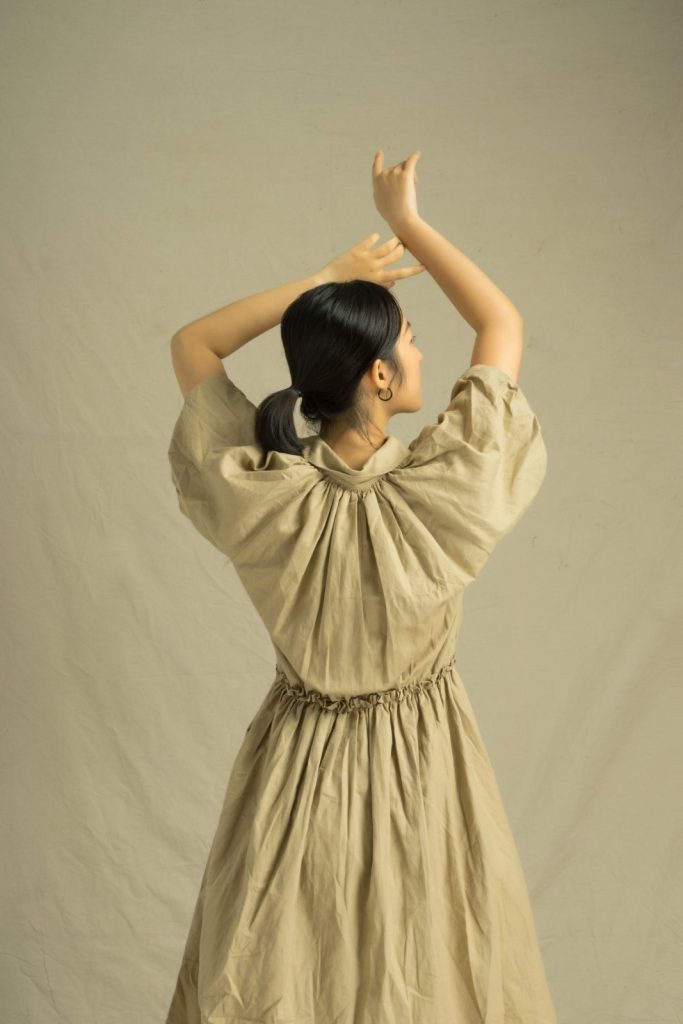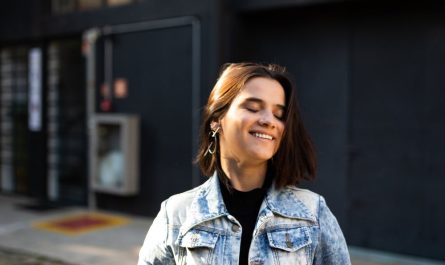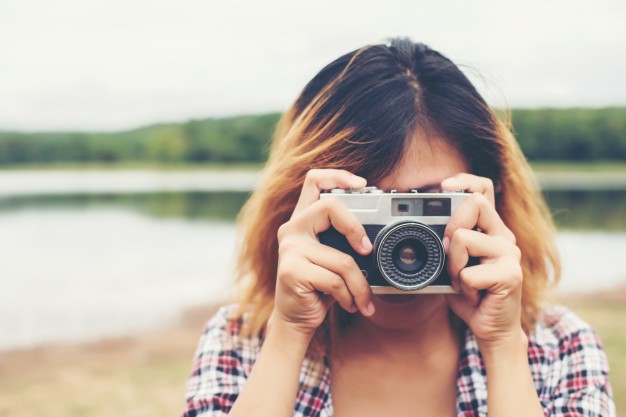It is all about incorporating Creativity in Fashion Photography!
An extra element is purposely utilized in creative fashion photography to improve the photo from its initial state. The addition of these extra features should be done on purpose. Achieving perfect exposure with the camera does not equate to a creative fashion photograph.
The element(s) exist outside of the conventional creative fashion photographic process and can be interpreted differently. They might be as simple as a photographer’s approach for capturing a photo’s particular aesthetic. They could also be a complicated post-processing technique utilized to bring out the mood and textures of fashion photography.
Because we frequently encounter similar fashion photography examples in magazines and on billboards, we often interpret fashion photography as too commercial and repetitive. Like any other type of fashion photography, creative fashion photography takes a lot of practice, innovative ideas, and a thorough understanding of composition and color theory.
What includes Creative Fashion Photography?
Fashion photography, when done correctly, is a mix of portraiture and conceptual photography. You will need a distinct style, inventive ideas, and the ability to work as part of a team, in addition to substantial lighting knowledge. Fashion photoshoots are a synthesis of technical and artistic elements.
We are frequently more concerned with the technical aspects of our profession, such as learning about our equipment, which settings to use, how to utilize editing software, and so on. Still, we rarely set aside time to learn about or nurture our creativity. Starting the creative process by writing down your thoughts and ideas is a terrific approach to getting started.
To begin, acquire yourself a notepad that you will use just for your thoughts, and begin by visualizing your perfect shot. Do not stress about your technical ability, which is unnecessary, but you must concentrate solely on how it seems.
Game of Lines?

Experimenting with different lenses is a terrific way to let your imagination run wild! Many individuals swear by their lenses to make them feel more creative, but cheaper solutions are available that do not cost the earth or even anything! If you want something free, try freelancing, or if you have old equipment, shoot through the viewfinder – anything that will pull you away from using a standard lens and towards trying something new. Try converting to black and white, running actions, drastically reducing the exposure, changing the overall colors, changing the crop, and flipping the image – you will not only feel more creative, but you will also save time.
Light up your creativity!
Before you buy lighting equipment, learn to work with natural light from a window. To begin, have your model – perhaps a family member or acquaintance – stand or sit no more than two meters from the window. In creative fashion, ideas to understand how the light falls on the model and how that impacts the overall image, shoot from all angles and sides.
Play with Shadows:
Turn the model to face the window and stand with your back to it if you want even light with no shadows. This light is fine, yet it lacks intrigue due to its lack of volume.
Turn the model around 30 degrees, and you should get some fascinating shadows that emphasize the form of the face; try a 45-degree turn for even more contrast and try new angles for better shoots.
Types of Equipment:
Although a studio strobe or a steady studio light is preferred, a ring light – typically a single circular fluorescent bulb or multiple connected tiny LED lights in the shape of a circle – can be effective for fashion and beauty photography.
The types of equipment for creative fashion photoshoots, such as softboxes, umbrellas, and reflectors, are lighting accessories that can change the look and intensity of the light. Playing with the direction of the light and the distance between it and the model is another helpful method.
All these decisions impact the character of the light you produce, and the best way to figure out what works and what doesn’t is to experiment. It would help if you placed enormous softboxes near the model for soft light. It is preferred in manual mode since it gives me more control over how the image turns out.
Switching to Aperture priority mode lets you focus on other technical issues, such as your model’s pose and the feelings you want them to portray.

And the photo’s composition if you’re shooting on location on cloudy weather or a windy day with frequent fluctuations in light intensity. You can occasionally defy photographic composition principles to acquire the shot you want. You can sometimes entirely disregard the rule of thirds and place your subject in the center, and this style works perfectly for fashion portraits.
As you can see, achieving balance is the key to a successful composition.
However, you may be obliged to place your subjects in unknown locations on occasion. If this happens, you can fix your essay with a counterweight. To achieve harmony in your image, you can include another component in the frame as a counterbalance. Suppose a woman sitting on the cart below is in the middle; the composition would appear imbalanced if she were alone.
When it comes to creative fashion photography, balance is arranging the elements in your shot in a way that feels natural and attractive to the eye. A harmonious composition feels balanced, whereas an imbalanced essay can feel “off” and less engaging. Size, contrast, color, tone, and texture all impact the “visual weight” of each element in your shot. To create a balanced image, place these elements so that no one part of the image has too much “weight” compared to the others.

Colors that are bold and vivid stand out more than those that are subtle and neutral. A strong focus point in your shot is created by a burst of contrasting color against a more monotonous background. Patterns and textures are aesthetically appealing, so they become natural focal points. Strong textures in supporting sections of your photograph will help balance an off-center subject, but textured backdrops that detract from the main focus point should be avoided.
Backing Up the right way!
The background is essential. Always keep the background in mind when shooting because it is crucial to the overall composition. Do not just consider where you will put the model. Think about how the backdrop elements will affect the image’s balance. The outfit you are photographing should influence your composition style. It’s not possible to utilize a background that matches the color or pattern of the apparel. If you are wearing a pattern-heavy dress, go for a neutral background. The viewer’s gaze should be drawn to the subject by the backdrop. People are drawn to lines and curves.
Let’s Prop it Out!
Props are all the objects that photographers place in the scene they’re capturing that aren’t the image’s main subject. Hats, jewelry, wristwatches, and all the other accouterments your model wears for a portrait are not props, in my opinion. Props aid in the development of a more cohesive theme in your creative fashion photography. They not only serve as context clues for your creative fashion photographs, but they also provide depth to your composition.
Another advantage of props, particularly in fashion portraiture, is that they can assist your model in relaxing in front of the camera by providing them something to do or focus on, allowing them to forget about you and your camera. By putting strange objects around your subject, you can even create surrealistic sceneries. You can use lines, curves, and forms to draw attention to the main area of interest. As her eyes roam throughout your shot, props provide your viewer perspective. They give the audience room to find a story.
Props can be used to accessorize and contextualize a scene. In creative fashion, photography shoots accessories can also draw attention to a specific topic required by the team. Do not merely let your model stand around in the environment to make your image livelier. Allow them to explore the area they are in. It not only makes posing more comfortable for them, but it also allows them to engage with the environment, which might result in an exciting composition.
You can also hunt for artificial structures in your area and pose your model there. Request that your person sits on the stairwell or leans against the handrail. They will feel more relaxed and less posy because of this.
Do not limit yourself to eye-level views when you are filming. Investigate your surroundings and examine the many angles from which you might photograph your model.
You may capture photos from above, below, or even by simply tilting your camera. Before you play around with perspective, keep in mind that it can drastically alter the tone of a shot. It not only makes them appear more prominent, but it also draws attention to the attire they’re wearing. However, do not come too close because they will appear threatening if you do. Because of the risk of receiving an “up the nose” perspective, fashion photographers are frequently taught not to shoot at a low angle to the subject.
On the other hand, Creative Fashion photographers are known for shooting from their knees or even their stomachs. You can emphasize the subject’s height and slenderness by capturing full-length shots from a low perspective. Shooting from below gives the impression that the model is taller and has longer legs, which are attractive qualities. The result is stunning when you are on the ground and photographing from a somewhat further distance with a 45mm or longer lens. You won’t usually get a low perspective exactly beneath the model, but rather from a distance.
Always think about how you want to display the model in an outfit.
Make sure not to block the details of the garment when posing your subject.
It is your responsibility to ensure that the viewers understand the product’s selling pitch. Avoid using any props that can divert the viewer’s attention, and get close enough to see any patterns. Because photographs are static, it can be challenging to convey the feel of a garment. Even if it isn’t, an outfit that lacks movement can appear rigid. It’s your job as a fashion photographer to capture the smoothness of whatever your model is wearing. The key is to make as much movement as possible. Learn to adapt to the occasion and remember that the dress is always the showstopper.
If you remember these fashion photography principles every time you shoot, you’ll notice that your photographs improve with time. Now is the time to remember that you have come to do something new and exciting, make new friends or strengthen old ones, and have fun. It’s critical to create the appropriate kind of atmosphere and environment for a successful shoot.
So, these were the ideas for creative fashion photography, and following these things can help you achieve better shots every time you take. Practicing can make you better than the rest, and also try to take every shot and never miss one in this type of fashion photoshoot.



